The Ultimate Guide to Off Grid Toilets
What You Need to Know, Before You Go
Here’s Our Ultimate Guide To Understanding and Selecting An Off Grid Toilet Without The Mess
An off grid toilet does not rely on any public services, so it has no link to a sewer system, a city water supply, or the electric grid. Some people may assume that it is a primitive and unpleasant way to deal with waste, but that is not always true with the advancement and multitude of off grid toilets available today.
Many people around the world, about 2.4 billion, lack safe sanitation facilities. To address this global issue, organizations and private companies have created advanced and eco-friendly alternatives. Off grid toilets have become smart systems that are user-friendly, easy to install, simple to maintain and suitable for any mobile or off grid lifestyle.
In addition, off grid toilets are ideal choices for boating and RVing, as well as off grid houses. Some of the best off grid toilet solutions have come from the sailing world.
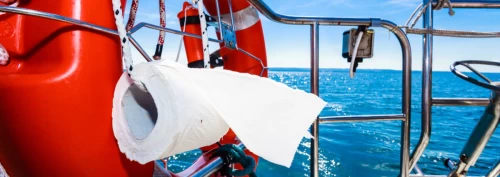
Most off grid toilets have a normal appearance on top. They are self-sufficient and have a mechanical device that helps users to transfer the waste into the bin. The more elaborate systems also have an integrated septic or bio-septic tank where beneficial bacteria decompose organic waste.
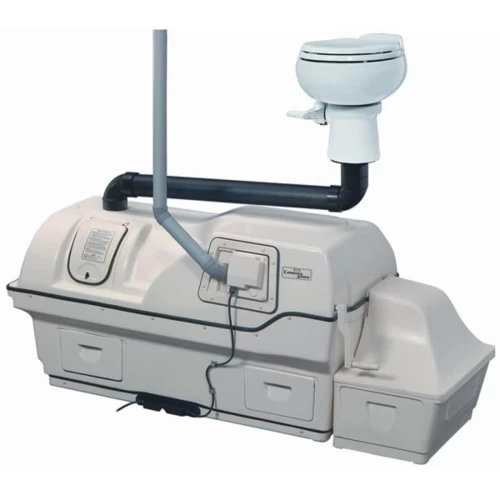
If you’re planning to live off the grid, one of the most important things to consider BEFORE you build is how you’ll manage your human waste.
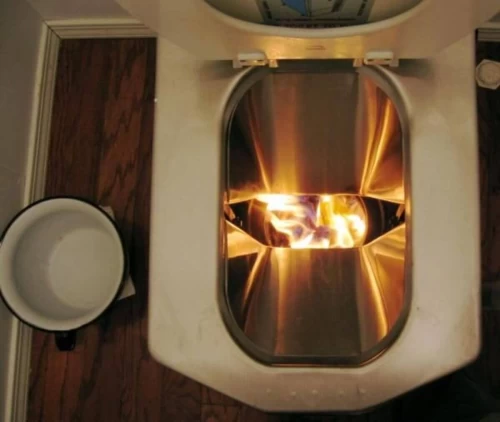
Want Us To Show You Our Complete Cabin Build Instructions & Costs?
You can grab our complete floor plans, materials list, cost list and a step-by-step build list as a THANK YOU for just or dropping by and checking us out!
The Truth About Off Grid Toilets
Off grid toilets are of course a necessity to living for expended periods or full time off the grid, but they can also pose some problems you need to know about. You must consider several important factors before you decide on which off grid toilet is right for you. That’s why we wrote this post. To help folks navigate the world of off grid composting toilets easier than we had it when we first went off grid. We’ll help you work through all the important considerations. Some of those include your location, the complexity of the installation, are you installing the off grid toilet during your initial construction period or as an upgrade to an existing build, are you changing out one type of waste management for a new type, toilet capacity, maintenance, power requirements, and of course budget.
Some Interesting Facts To Know
There are some interesting facts to know about the waste we produce that might surprise you and help guide your decision on what particular off grid toilet to choose.
- Urine accounts for about 85% of the waste volume
- Raw sewage ONLY occurs when liquids AND solids are mixed together. When they are kept separate the management of human waste becomes easier by factors of magnitude. An important consideration later on in the post
- You can use any type of toilet paper you like with certain toilets
- When dried solids are disposed of in the ground bacteria in the soil “consume” the fecal pathogens, thereby rendering the content harmless
- In most municipalities, urine is considered gray water and can be drained into a gray water tank as opposed to a black water tank
How To Choose The Best Off Grid Toilet For Your Needs
There are several different types of off grid toilets. Each one has its pros and cons and specific requirements for installation.
This comparison chart comes from The Cabin Depot. They have an extensive selection of off grid toilets. Check them out!
We have a $20 discount coupon that you can use if you decided to shop with The Cabin Depot. Just use the code: OFFGRIDCABIN when you check out!
IMPORTANT: There is much more flexibility if you are installing your off grid toilet during the initial build phase of your home. Retrofitting a toilet after the walls and floor are closed up is much more work so making the decision on a system that is right for your needs is best done during the planning stages and before you build. Here are some considerations BEFORE you build:
Location
If you’re planning to buy or build an off grid toilet system, it’s important to note that local rules and regulations may vary depending on your location. Additionally, you should consider the distance from the nearest house connected to the centralized sewer, energy costs, and average temperatures throughout the year.
It’s worth noting that not all off grid toilets are designed to function in all climates. Some are better suited for warm areas, while others are better for four-season solutions. Some systems do not output anything at all into the environment while others eject only the sterile liquid and not the solid waste. It’s only when you combine the liquid and the solids of human waste together that you create “sewage”. Separated they can be handled quite differently as you’ll learn.
Capacity
When deciding which off grid toilet system to buy, it’s important to consider the size of the system based on your usage. A small off grid toilet is ideal for an RV or a small off grid cabin, cottage or home where you only spend a few weekends a year. However, if the off grid toilet serves a family of several adults plus children every day, you’ll want a system that’s big enough to keep up with everyone’s needs.
This element is vital, especially when you pick a solution that needs to be emptied regularly or when you live in a cold climate and need to exit a warm cabin in the middle of the night to run outside to an outhouse. Yes, folks still have and use those!
Installation
Aside from choosing which system to buy, the installation process is the next most critical factor that can make or break even the best off grid toilet solution. Therefore, it’s essential to consider the complexity of the installation process when you consider the best off grid toilet for your homestead or cabin.
Anyone with average DIY skills can install an off grid toilet and chances are if you’re building an off grid home you can easily install one of these systems. However, if you’re not confident in your DIY skills and have any doubt about making messy mistakes, you might want to opt for a fully assembled product or find a company that can install the toilet for you.
Alternatively, you can always hire a third party to get the help you need. In this scenario, it’s crucial to ensure that the contractor has prior experience installing the type of toilet you’re purchasing. You can live with a shoddy bathroom paint job but an improperly plumbed urine drain line is nothing to laugh at.
Maintenance
Off grid toilets are not created equal. Some systems are complex and self-sustainable, which means they require low maintenance. However, if you don’t want to invest too much in such a system, you can opt for an eco-toilet that requires you to carry a bucket of waste to a predetermined disposal point several times a week.
It’s important to know where and how you’ll dispose of the waste before picking the right system. Analyzing the implications of having a specific type of off grid toilet can help you make a better decision. Our system separates the liquids from the solids and after a period of “dehydration” the solids become odorless, dried up and can be discarded as regular household waste.
Cost
When considering the cost of an off grid toilet, it’s important to keep in mind that the price can vary depending on the type of system you choose. For instance, a simple bucket toilet can cost as little as $20, while a high-end composting toilet can cost upwards of $2,000. Other factors that can affect the cost include the frequency of use, maintenance requirements, and installation complexity. It’s also worth noting that some off grid toilets require additional components such as ventilation systems or urine diverters, which can also add to the overall cost. It’s essential to assess your budget and requirements before making a purchase decision.
Top 5 Off grid Toilets To Consider
1. Composting Toilets
Composting toilets are toilets that use natural processes to decompose human waste into a nutrient-rich soil-like material. Some models are waterless and urine diverting, which means they separate the liquid and solid waste and reduce odor and volume. Some examples of composting toilets are the Boxio, and the Nature’s Head Composting Toilet.
Below is the Boxio Composting Toilet.
Below is the Nature’s Head Composting Toilet. See it at The Cabin Depot by clicking here.
Pros
- Environmentally friendly
- No water or electricity required for some models
- Produces compost that can be used as fertilizer
Cons
- Requires regular maintenance
- Can be expensive
- May produce unpleasant odors
Requirements for Installing
- Adequate space for installation
- Proper ventilation
- Access to a composting area
2. Incinerating Toilets
Incinerating toilets are toilets that burn human waste into ash using propane or electricity. They are waterless and do not produce any liquid waste. They are suitable for places where there is no access to water or sewage, or where composting is not feasible. Some examples of incinerating toilets are the TinyJohn, Cinderella Freedom, and The Incinolet Toilet.
Below is the Cinderella Freedom Incinerator Toilet.
Below is the TinyJohn Incinerator Toilet.
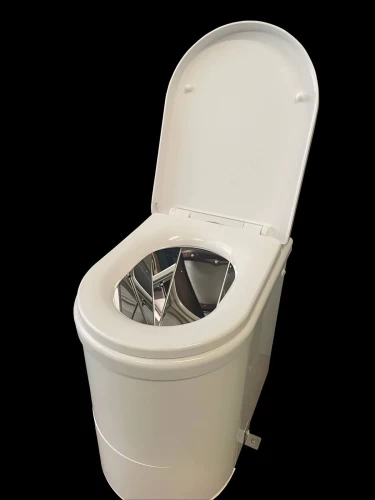
Below is the Incinolet Incinerator Toilet.
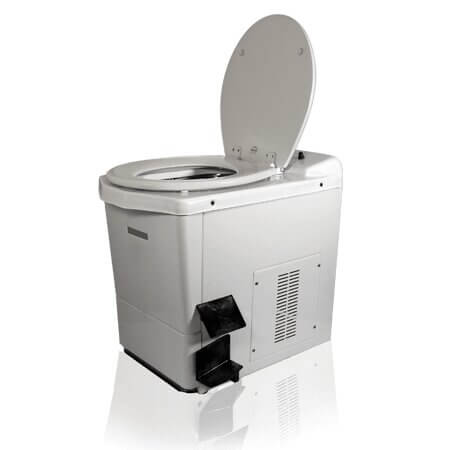
Pros
- No water required
- Minimal maintenance required
- Produces ash that can be disposed of easily
Cons
- Expensive
- Requires electricity or propane
- May produce unpleasant odors
Requirements for Installing
- Access to electricity or propane
- Adequate space for installation
- Proper ventilation
3. Outhouses
Outhouses are toilets that consist of a simple wooden structure with a hole in the ground or a pit where human waste is deposited. They are the oldest and simplest form of off grid toilets. They do not require water or electricity, but they may need a vent pipe or a chimney to reduce odor and flies.
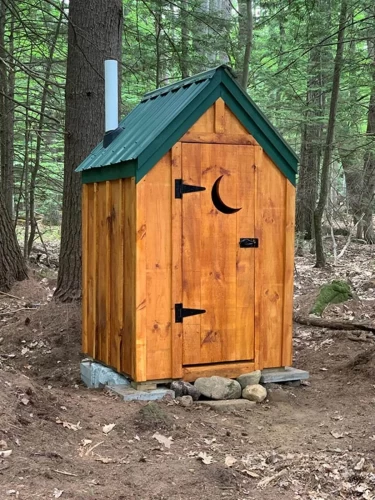
Pros
- Simple to build
- No plumbing or electricity required
- Inexpensive
Cons
- Requires regular maintenance and cleaning
- May produce unpleasant odors
- Not suitable for all climates
Requirements for Installing
- Adequate space for installation
- Proper ventilation
- Access to a composting area (if desired)
4. Bucket Toilets (Honey Buckets)
Bucket toilets are toilets that use a bucket or a pail as a receptacle for human waste. They are also known as honey buckets or portable toilets. They are usually lined with a plastic bag or a biodegradable liner that can be sealed and disposed of after use. They may also have some absorbent material or sawdust to reduce moisture and odor. Some portable toilets include the Glenmal 5 Gallon Portable Camping Toilet, the Laveo Dry Flush, and of course the 5 gallon bucket with some good old ingenuity.
Below is the Glenmal 5 Gallon Portable Camping Toilet
Below is the Laveo Dry Flush
Below are some simple 5 gallon bucket ideas
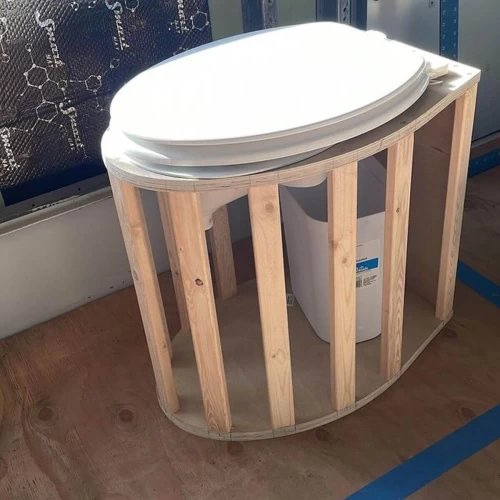
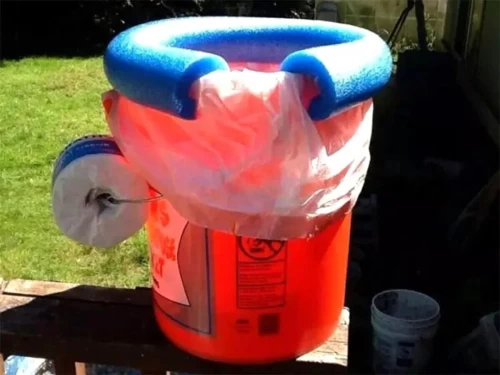
Pros
- Simple and inexpensive
- No plumbing or electricity required
- Easy to maintain
Cons
- Requires regular emptying and cleaning
- May produce unpleasant odors
- Not suitable for all climates
Requirements for Installing
- Adequate space for installation
- Proper ventilation
- Access to a composting area (if desired)
5. Separett Toilets
The separett toilet is a urine diverting toilet that is specially designed for small spaces, such as tiny homes, camper vans, caravans, boats, etc. It has a built-in fan that expels odors and condensation from the toilet and the bathroom. It can be powered by 12V or 110-240V electricity. The urine is drained to a container or a leaching bed, and the solids are collected in a compostable bag that can be disposed of or composted. You can get a $20 discount using our code OFFGRIDCABIN when you check out from The Cabin Depot when getting a Separett Toilet. This is the same Separett make and model we use at our off grid cabin.
Pros
- Environmentally friendly
- No water or electricity required (for some models)
- Produces compost that can be used as fertilizer (for some models)
Cons
- Expensive (for some models)
- Requires regular maintenance (for some models)
- May produce unpleasant odors (for some models)
Requirements for Installing
The requirements for installing a Separett toilet will depend on the specific model you choose. However, in general, you’ll need:
- Adequate space for installation
- Proper ventilation
- Access to a composting area (for some models)
The Off Grid Toilet We Chose
A lot of research and product comparisons went into deciding on the best off grid toilet for our needs but ultimately an easy one once we understood our daily requirements and environmental factors. We decided upon the Separett villa 9210 waterless toilet, and have done zero maintenance in five years. We have been very happy with our decision. We can confidently recommend The Cabin Depot as an reliable online store to purchase a Separett toilet.
This was the perfect choice for us based on several factors:
- Liquids and solids are separated in the bowl so that each can be disposed of individually
- Solids are composted while urine is drained off to a small leaching bed through the floor
- The built-in fan expels odors and condensation from the toilet and bathroom very quietly and effectively <30 dB(A)
- The vent duct can be run behind the toilet straight through an outer wall or run up through the roof. Ours goes straight through the wall.
- The Villa 9210 includes both a 110-120V adaptor and a 12V power cable with alligator clips to connect directly to a 12V battery or directly off any 12V supply
- Operating time for the fan just off a 100Ah 12V battery is 2-3 weeks
- The Villa 9210 can also be used with a wind turbine vent for those totally off the grid with no power at all
- The Separett Villa 9210 can be installed in both warm and unheated locations, and will work perfectly well irrespective of the room temperature
Installing The Separett Villa
Installation was very easy. The only prep work we did was dig a small pit, often call a soak away pit, beside the cabin.
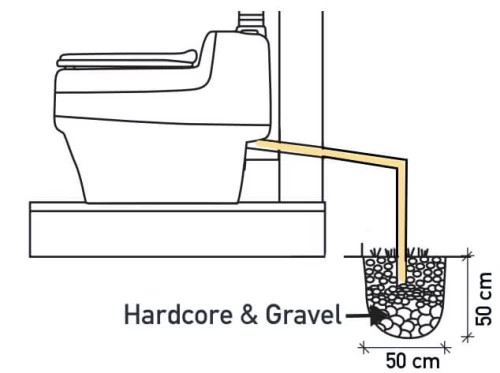
TIP: In addition to the gravel we also placed an INVERTED five-gallon bucket in the pit with a hole drilled in the top to allow the urine tube to enter (only inserting the tube approximately four inches) so that in the unlikely event we ever did have extended exceptionally frigid cold for several weeks our urinary diversion tube would never freeze up on us. We then covered the top of the bucket with more gravel and then soil.
For more details regarding urine disposal and regulations see the WaterlessToilets article here.
In addition to digging our soak away pit the only other DIY work was to drill a hole for the urine drain tube which runs through the floor and into the top of the five gallon bucket. Lastly was drilling a hole for the exhaust port.
Below you can see the exhaust port for the separett villa toilet.
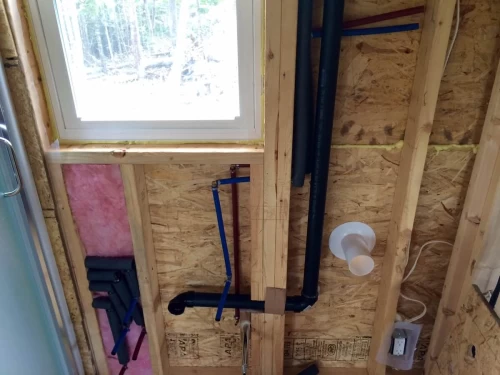
Below shows the exhaust port
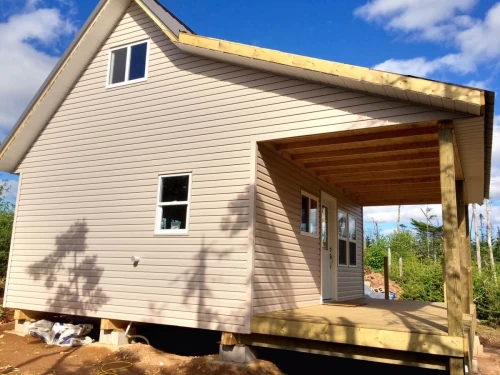
Below is a rough fit of the toilet
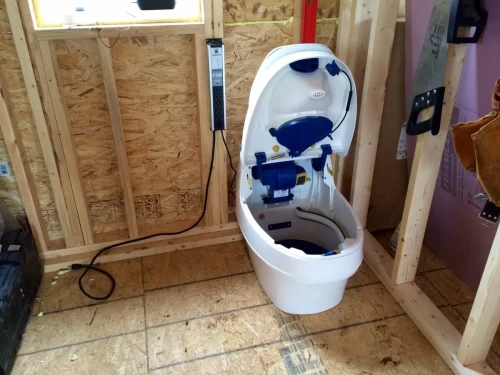
Below the separett villa is installed for “temporary use” until the flooring is installed.
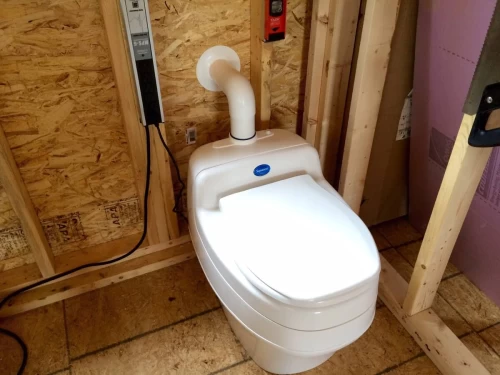
Below we finally have the bathroom “mostly” finished.
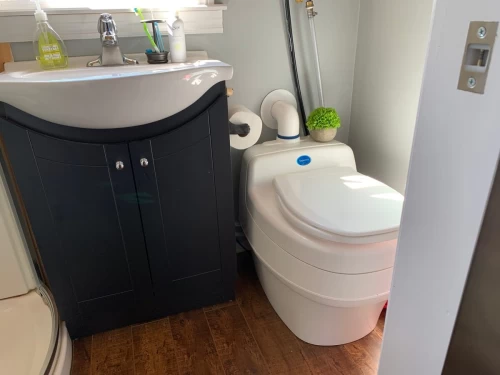
Here are some additional video of the separett 9215 unboxing as well as an overview of how the urine diversion system works:
Below unboxing the Separett Villa…
Below how the urine diversion system works for the Separett Villa…
Some additional info about the separett villa off grid toilet for those interested:
- Dimensions: 26.47 in deep x 17.95 in wide x 21.3 in high
- Material: Recyclable high gloss polypropylene
- Solids container: 23 l polypropylene
- Voltage/power: 12 V/2.54 W
- Energy consumption: 0.06 kWh/day
- Connection: 1.55m cable. Adapter 110/230V-12V
- Noise level: <30 dB(A)
- Max user weight: 150 kg
- Seat height: 17 in
- Pipes: Ventilation out Ø 75 mm | Urine out Ø 32 mm
Conclusion
Off grid toilets have come a long way from the simple systems our ancestors used before modern times. Nowadays, you can rely on sophisticated, sustainable designs that manage waste and, in some cases, enable you to reuse that waste to produce energy.
They’re the ideal solution for homesteads located in areas where access to public utilities is limited or non-existent or for people looking to achieve a self-sustainable lifestyle.
As more eco-friendly toilets are developed, it’s important to assess a series of factors before picking the right solution for your needs. Among the most important things to consider are your location, budget, and the type of toilet that is more likely to fit with your lifestyle.
I hope this information helps you to learn more about the different types of toilets used for off grid living, including our separett toilet.
Your Turn...
P.S. If you enjoyed this post about The Ultimate Guide to Off Grid Toilets: What You Need to Know Before You Go then why not share it.
Share This Story, Choose Your Platform!
It’s how we keep growing our off grid community here and lets us know we’re posting the right kind of info you’re looking for.
Here’s a special Pinterest PIN for all our Pinterest fans out there!
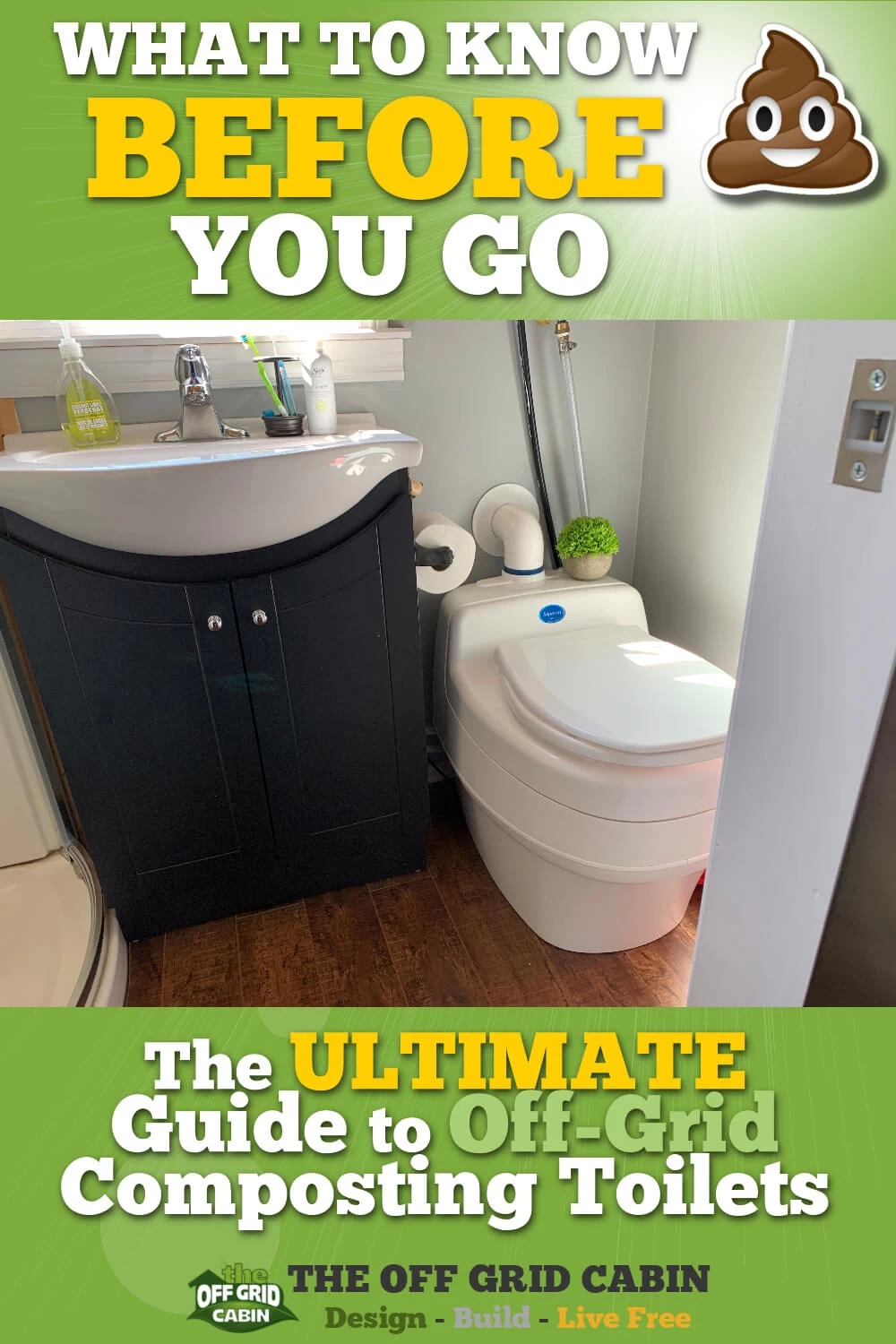
Let us know what you think in the comment section below.
And be sure to join the rest of the off grid community here and follow along with the build of our cabin!
We’ll update the Building The Cabin section every time we complete a new phase of the build so be sure to check in and watch the progression.
how to clean solar panels
How to Clean Solar Panels: A Step-by-Step DIY Guide As you already know, residential and off-grid solar systems are amazing sources of renewable energy that are quickly growing in popularity. The large flat [...]
earthship
What Is an Earthship and How It Can Help Save the Planet Imagine living in a home that is completely self-sufficient, eco-friendly, and comfortable. A home that grows its own food, collects its [...]
3-way-switch-wiring
3-Way Switch Wiring: A How to Comprehensive Guide Here at the off grid cabin we’ve done our fair share of electrical work including 3-way switch wiring. We’ve done all the internal and external [...]
solar generator
How To Find The Best Solar Generator Impact-Site-Verification: c336f89e-c692-4afd-99d9-0150f7329466 When we first cleared the land to build our off grid home back in 2016, we started with one of those small 700 watt [...]
Off Grid Heating
The Best Off Grid Heating Methods Introduction To Off Grid Heating If you're Living off the grid already or planning to in the future, you already know how important it is to have [...]
off grid appliances
The Best Off Grid Appliances for Off Grid Living Introduction To Off Grid Appliances Living off the grid can be a rewarding and fulfilling experience, but it also comes with some challenges. One [...]
If you want to read more details about off grid toilets, you can check out these links:
- anoffgridlife.com
- primalsurvivor.net
- 3. survivalworld.com
- offgridgrandpa.com
- Off-Grid Toilets: The Ultimate Guide
- 9 Best Off Grid Toilet Options for Your Homestead, Camper, or RV
- Separett – Waterless composting toilets
- Toilets – Separett
- Separett – Tiny® with Urine container
- Separett Composting Toilets – Composting Toilets USA
- Incinerating Toilets – Incinolet.com
- Incinerating Toilets: Pros and Cons | Home Matters | AHS
- Outhouse – Wikipedia
- Outhouse Construction & Maintenance Specifications
- How Your Septic System Works | Septic Systems (Onsite/Decentralized Systems) | US EPA
- Septic Systems: The Good, The Bad and The Smelly | Cottage Life
- Bucket toilet – Wikipedia
- How to Make a Camping Bucket – wikihow
We do use affiliate links here on our site. This doesn’t change the price of anything for you but simply gives us a few cents as a kickback for sending Amazon some traffic from our blog. We thank you ahead of time if you do end up buying anything through one of those links.


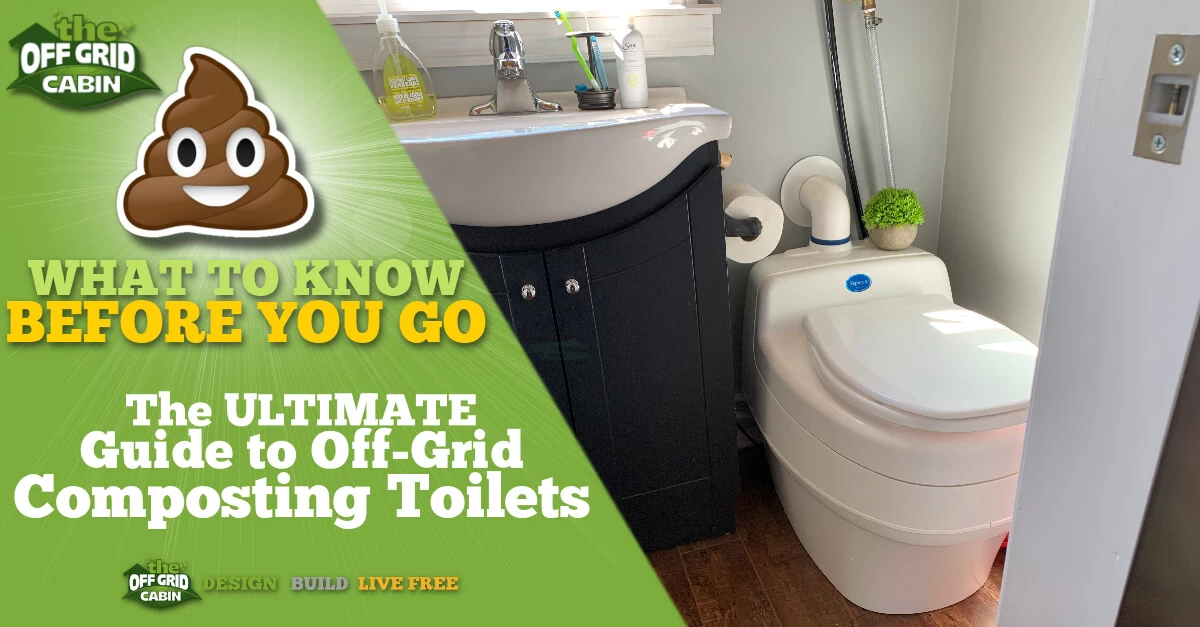
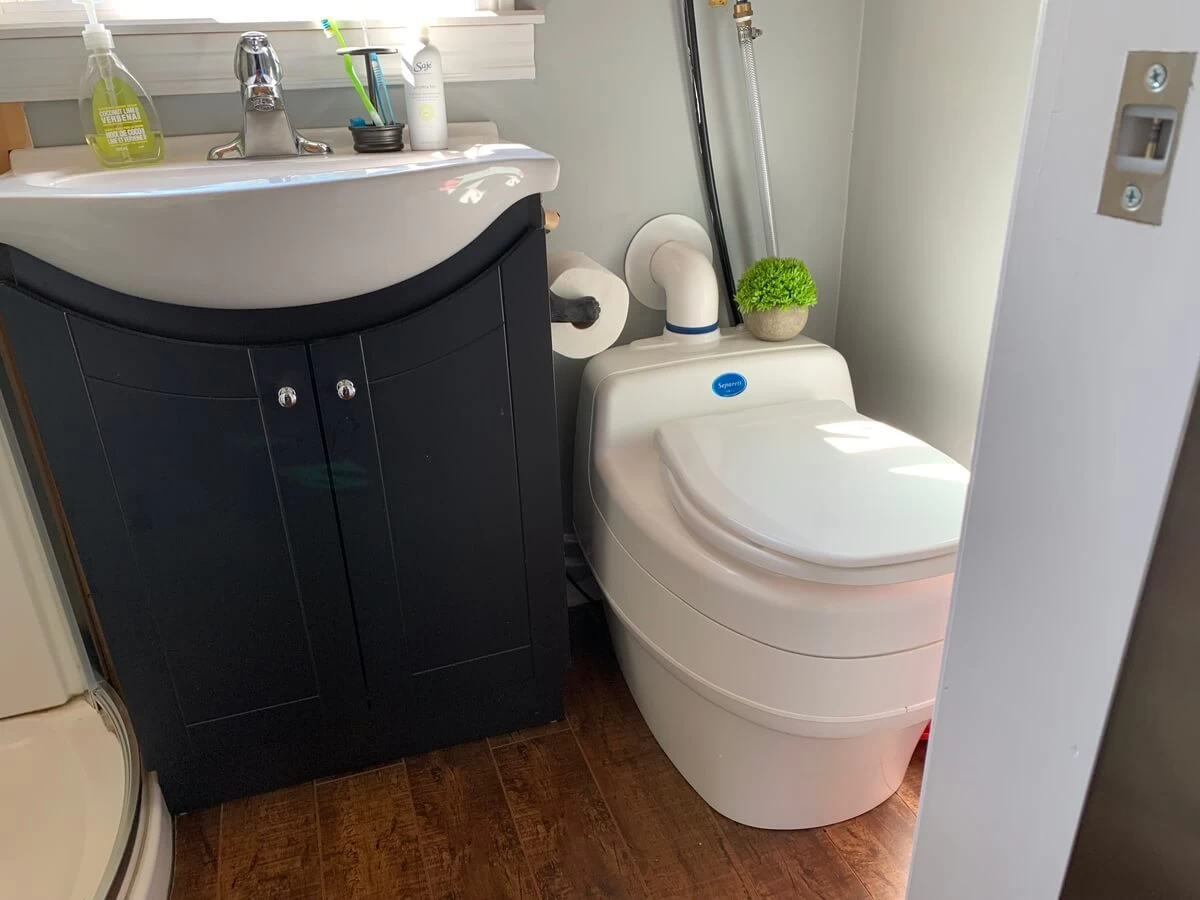
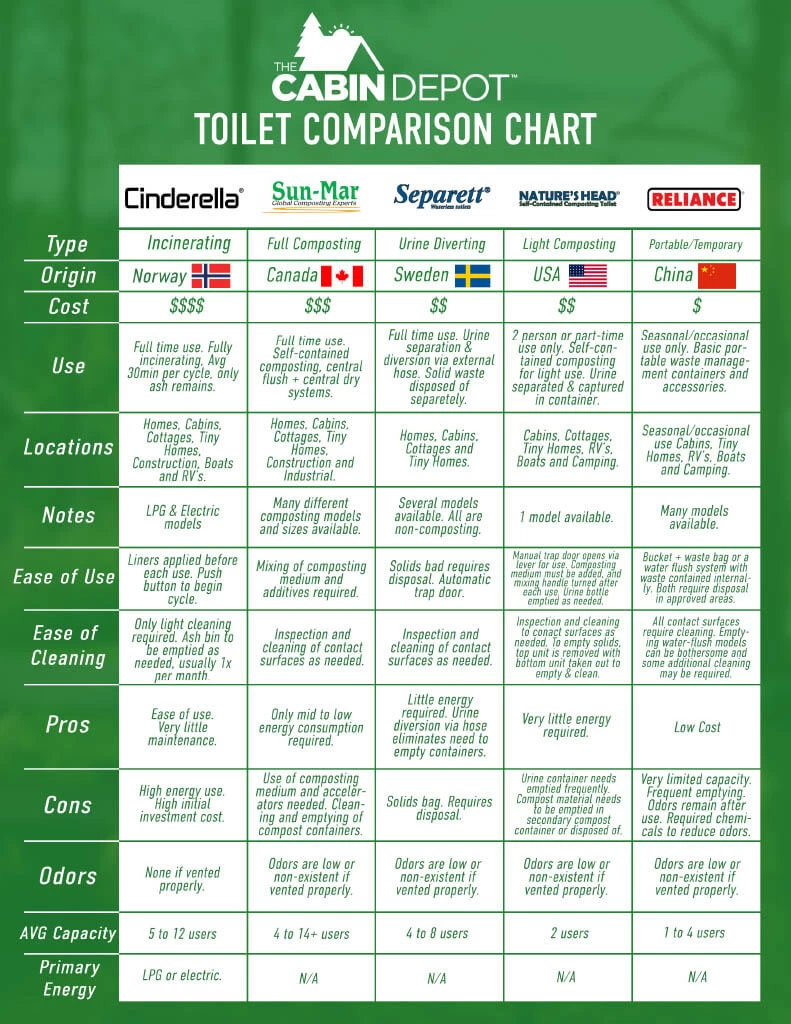
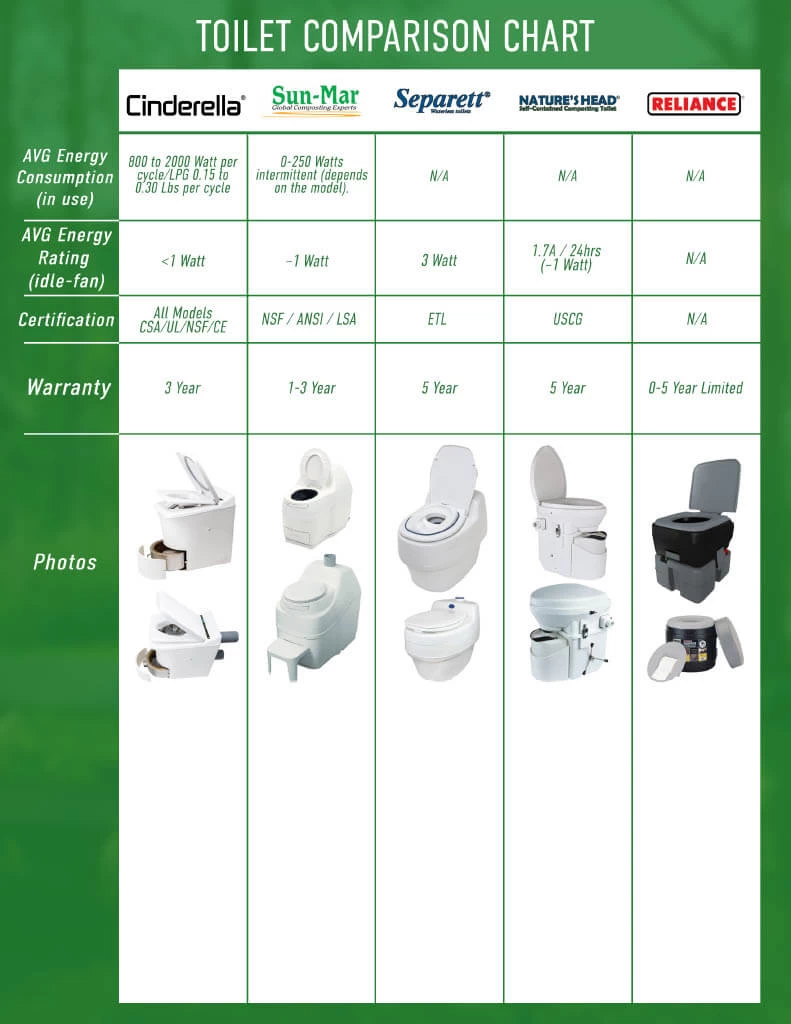
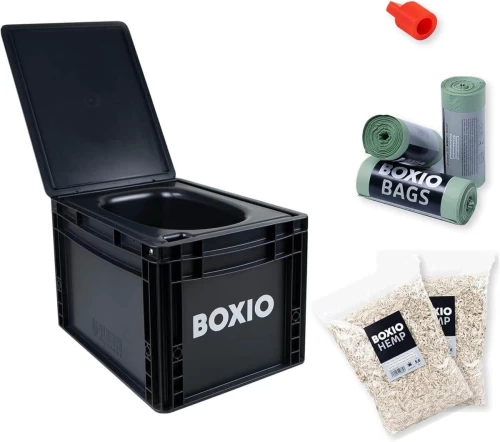
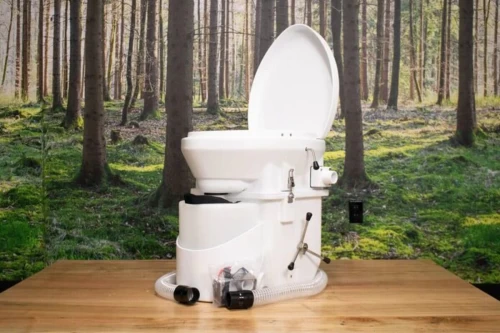
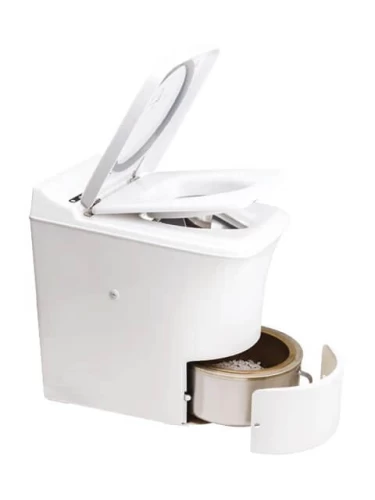
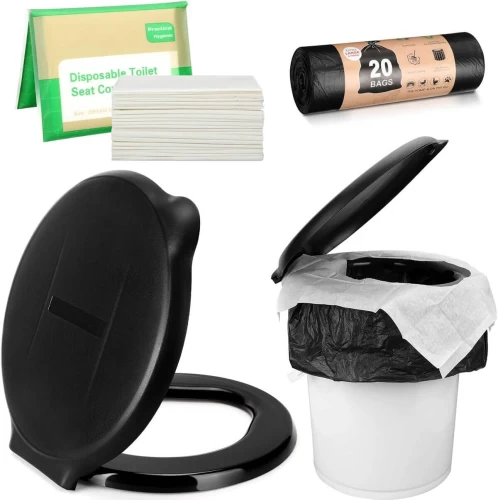

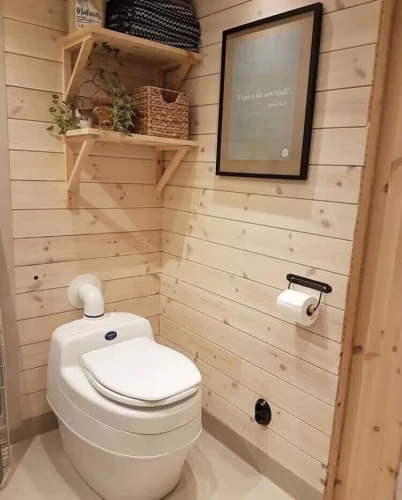
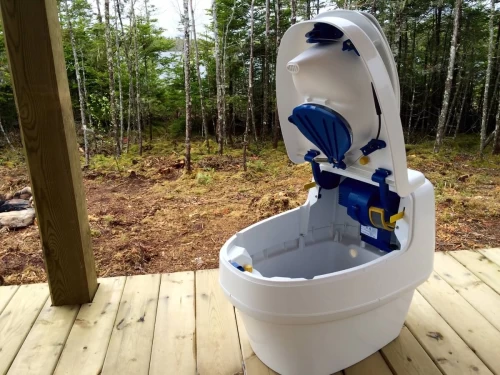
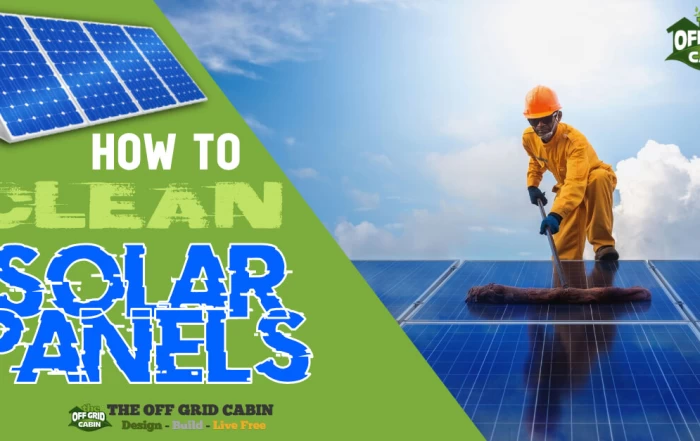
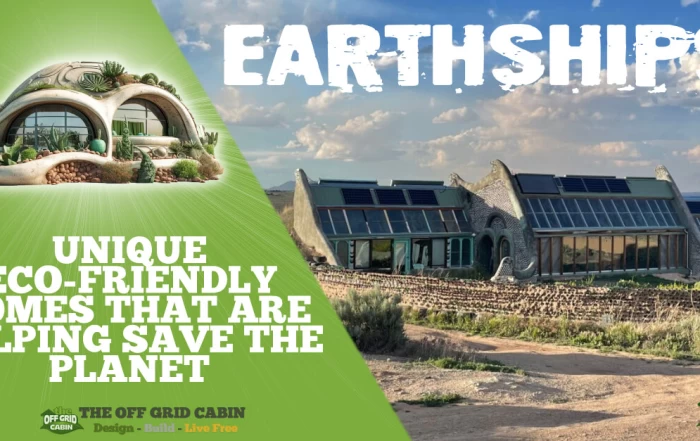

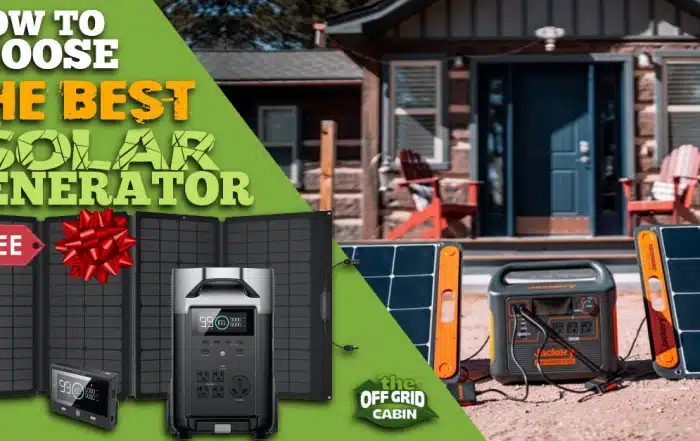


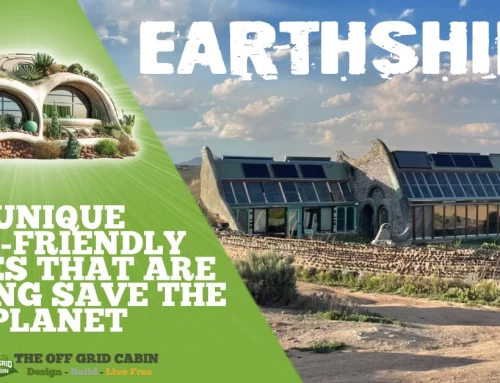

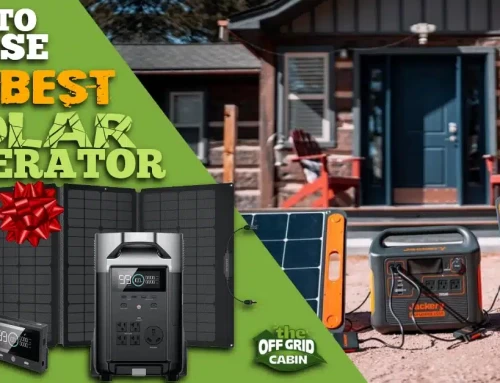

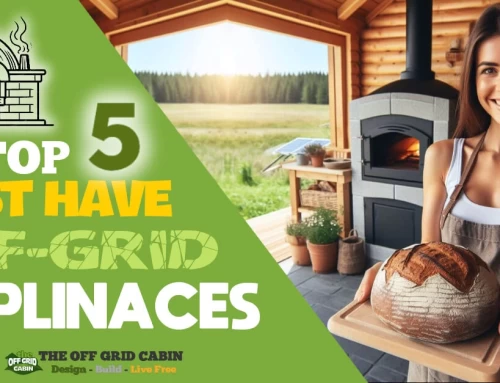
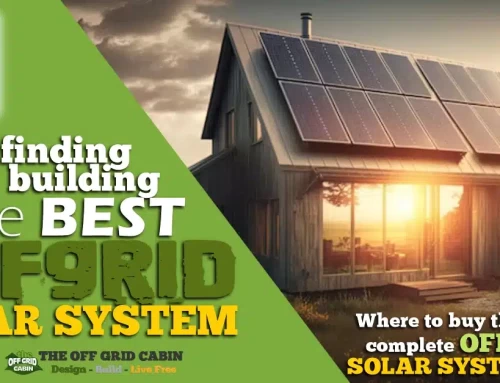



Leave A Comment